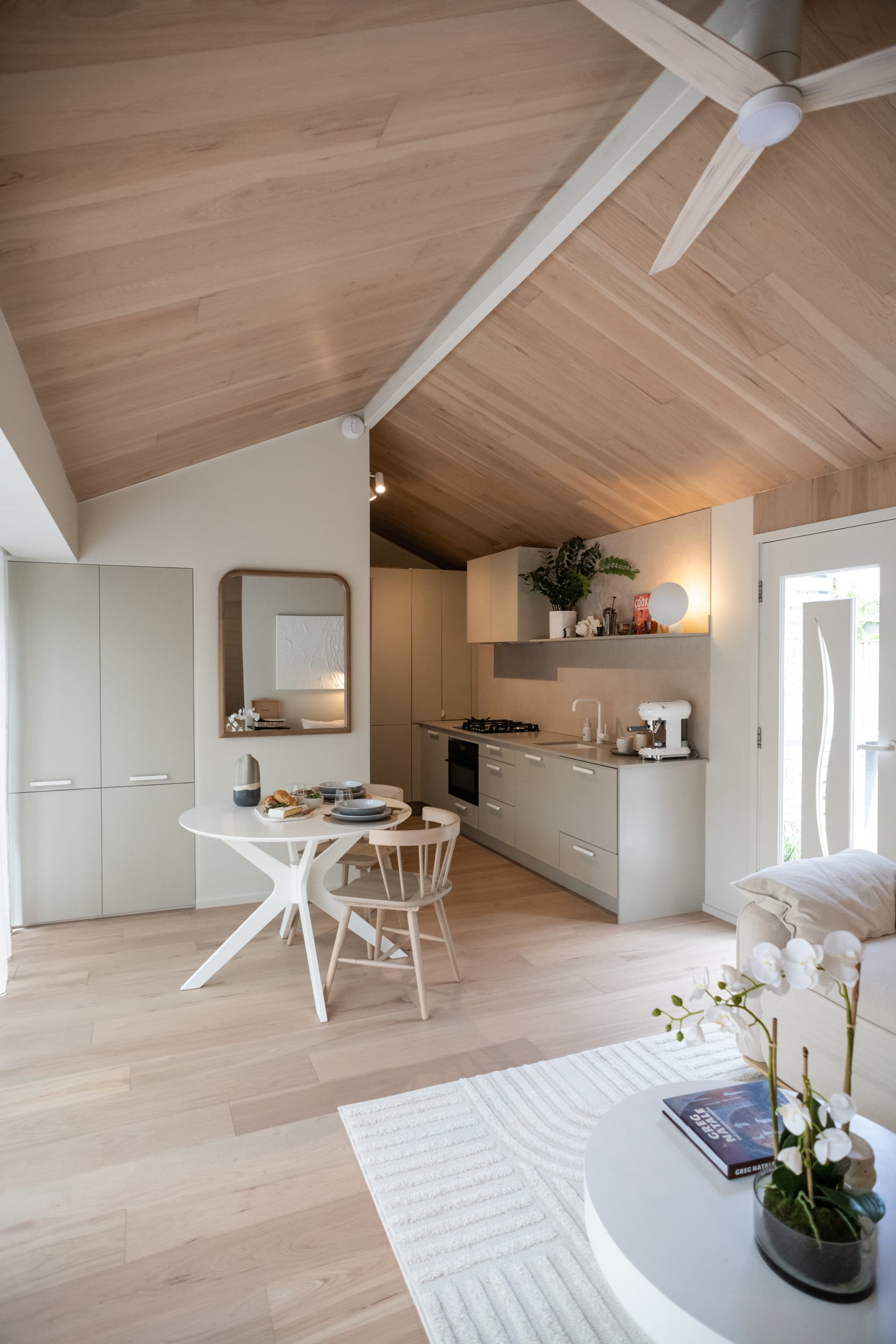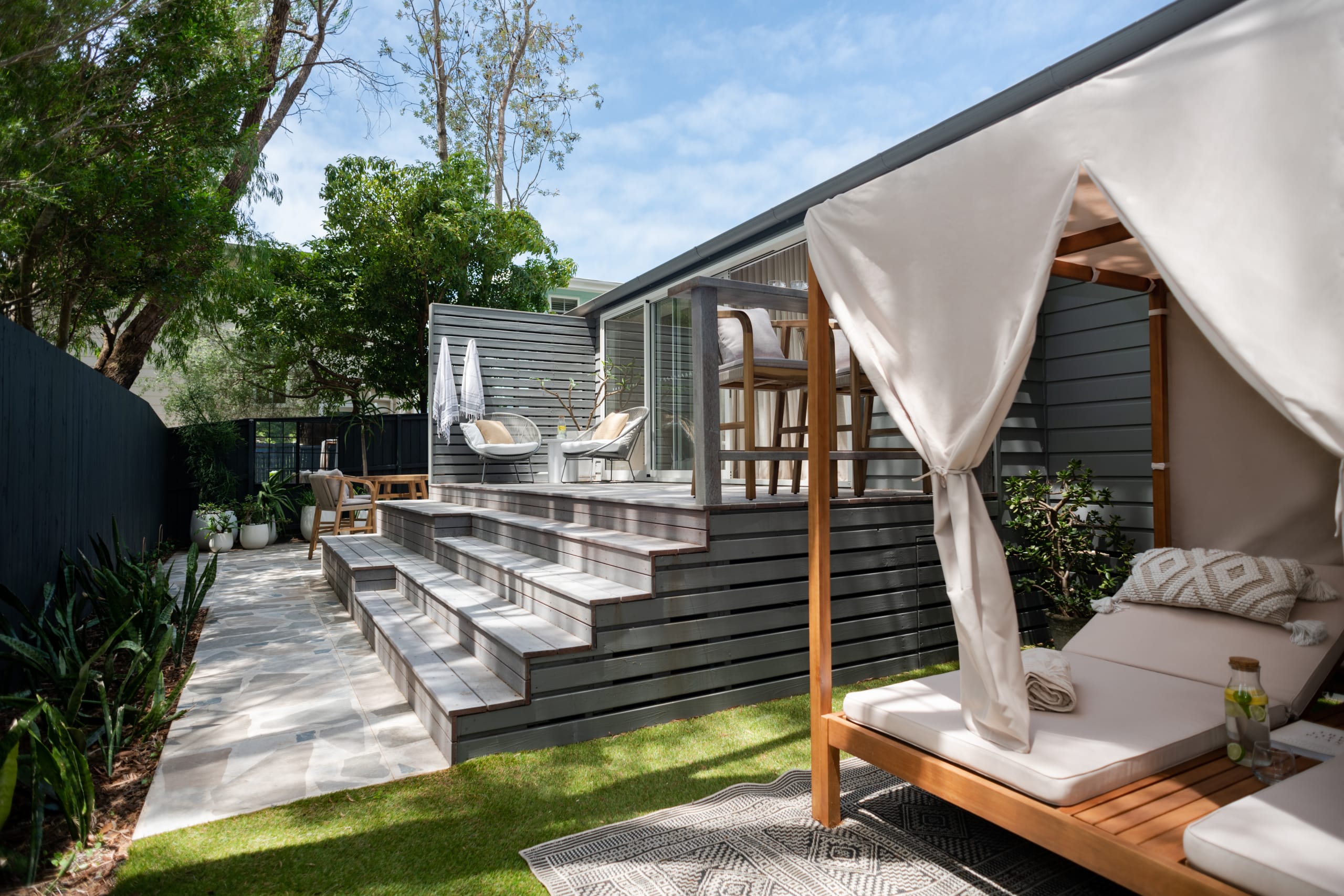Read More
How to make money off a tiny home rental
Whether it’s the need for more space, flexibility, or a way to make a side income, tiny homes are generally a small, functional house that can be used residentially, making them perfect for renting out short or long-term.
That said, it can be daunting to start without a background in tiny home living. Do they really make money? How much of it goes into maintenance? Is it worth it?
TV personality and interior designer Darren Palmer knows what it’s like working on a tiny home rental firsthand, having recently completed his own on NSW’s south coast.
“You need to think about all the different components of what’s going to make the house work properly for that market,” he says.
From the planning and flooring to décor and furnishings, Palmer tells how to firstly prepare your space, and secondly on making your tiny home a money-making success.
How to prepare the home for the rental market
1. Consider the target market
One of the most important things to think about is what will make the tiny house work for your intended market.
“What are you putting it there for, and why?” Palmer asks.
“Who is going to be using it, and what do they need it to do? How big or small do things like a bed or fridge need to be?”
Remember, your tiny home isn’t just for you, but guests with different tastes, so Palmer advises on keeping things neutral to “provide a serene holiday escape.”
2. Ensure the space has an open feel
While it is a tiny home, people still want to feel like they have space and aren’t cramped in. Thinking through the floorplan, Palmer says, is key to success.
For higher desirability with your potential market, think about the “double use and more use out of spaces,” he says.

In his own home, Palmer chose the Hickory Elegance hardwood timber range in the Beverly Hills colour from Carpet Court, continuing the floorboards up the wall and onto the ceiling to “really open up the space.”
He also suggests minimising the number of walls and doors in the tiny home, as too many makes it feel “boxy.”
3. Make it enticing and relaxing
Your tiny home should be appealing in décor, and a source of relaxation for incoming guests to feel rested, providing them with a “good night’s sleep,” says Palmer.
In his own tiny home, Palmer chose the Austere Blockout roman blinds because they’re a “trendy take on textured fabrics, and the range gives you the option to install individual or dual blinds in light filtering and block out fabric”.
Another décor trick is hanging drapery from the ceiling, giving an illusion of added height.
Adding the UV-resistant Bali Sheers in the colour Flax, he was able to make the space feel private “without sacrificing the light”.
4. Create a seamless indoor-outdoorfeel
Any additional space you can add from the outside-in will make a big difference, according to Palmer.
In his tiny home, Palmer added a timber deck to “open everything up and have one big indoor-outdoor room.”

Carefully consider the landscaping as this plays a huge part maximising space. Picture: Cindy Live
You could even create a patio using turf like LuxLife to extend the space, creating the perfect outdoor area for an evening cocktail or morning brunch.
How to make your tiny home profitable
1. Have it photographed
Once you’re set-up, it’s time to frame your tiny home in the best possible light.
Photos are important – great pictures have inspired some buyers to purchase from photos alone, while terrible real estate photos can mean the difference between a profit and a loss.
Consider hiring a professional property photographer with experience in framing your tiny home for maximum benefit to highlight “the design sections that make your tiny home feel large,” Palmer says.
2. Post it on listing sites
There’s no point running a rental if no one knows it exists, so make room in your budget for marketing so you can gain returns on your investment.
As well as professional-looking photos, how would you describe your property to make it appeal?

When marketing your tiny home, ensure the listing has the look and feel of a styled space as this makes it more appealing. Picture: Cindy Live
For example, how many people does it accommodate? Are pets allowed? And a big one – is it in a popular location?
“Tiny homes in desirable areas can rent pretty much all year round,” Palmer says, so getting the right description out to your market is key.
Ensure your listing is advertised on key rental and holiday websites, or if for a long-term rental, that you have engaged a real estate agent to market your tiny home efficiently.
Finally, keep up to date with market trends and insights to ensure your property is accurately priced according to rental supply and demand.
3. Consider profit versus maintenance
So, once you’re all set up, is it worth it?
It’s a yes from Darren Palmer.
The positive difference with a tiny home is that “costs normally associated with a larger property, like a home with a yard, become obsolete,” he says.
Of course, there are cleaning costs amongst other regular fees, but Palmer estimates that the ratio of profit versus maintenance “is probably around 80% income and 20% expenses”.

You want your rental to be low maintenance, so LuxTurf LuxLife means there is no mowing lawns! Picture: Cindy Live
Palmer adds that the opportunities a tiny home provides for your lifestyle and income are never-ending.
“You could really do whatever you want.”
If you adequately plan with your design preferences, the combination of spaces, marketing and budgeting, he says, “you’re going to win.”